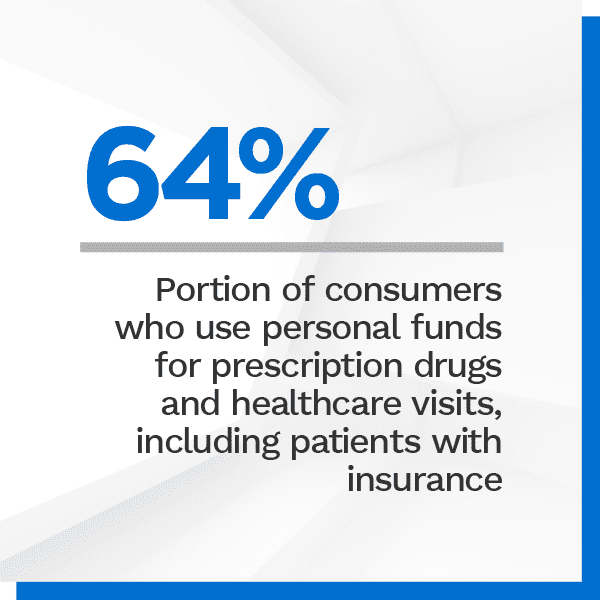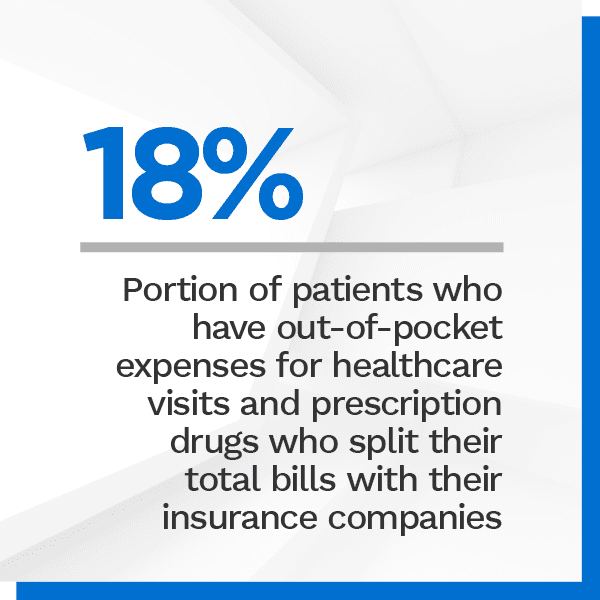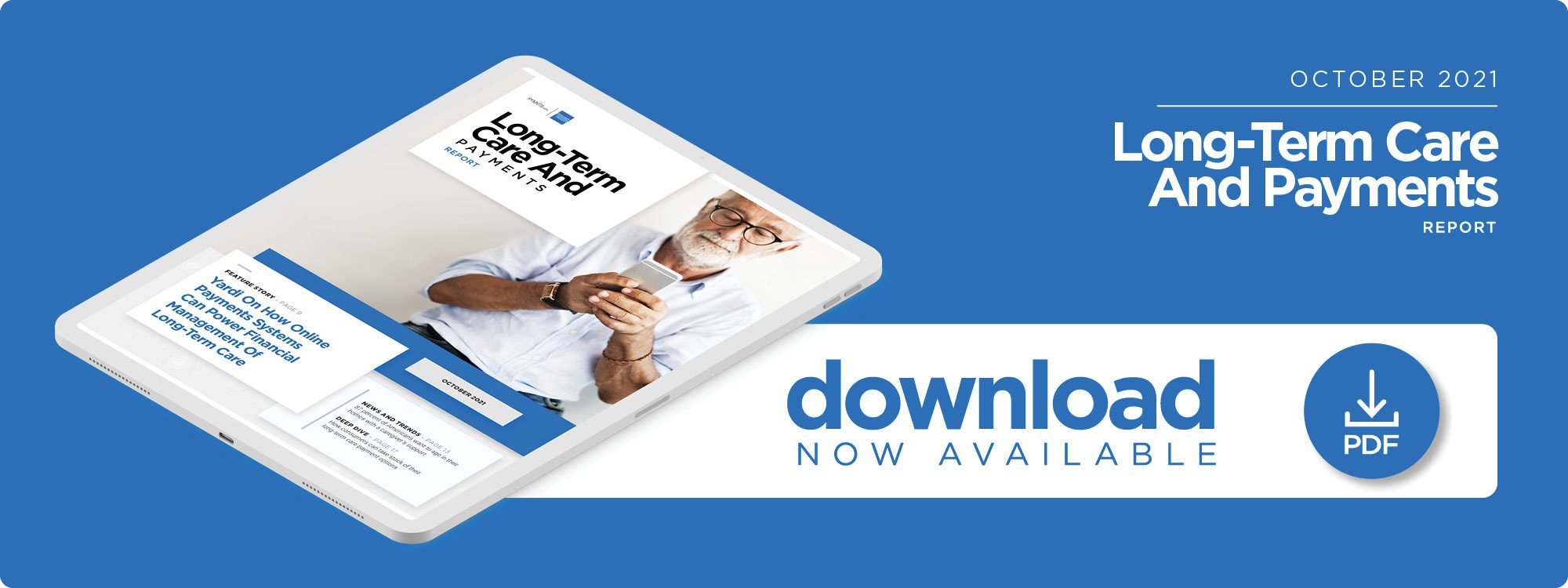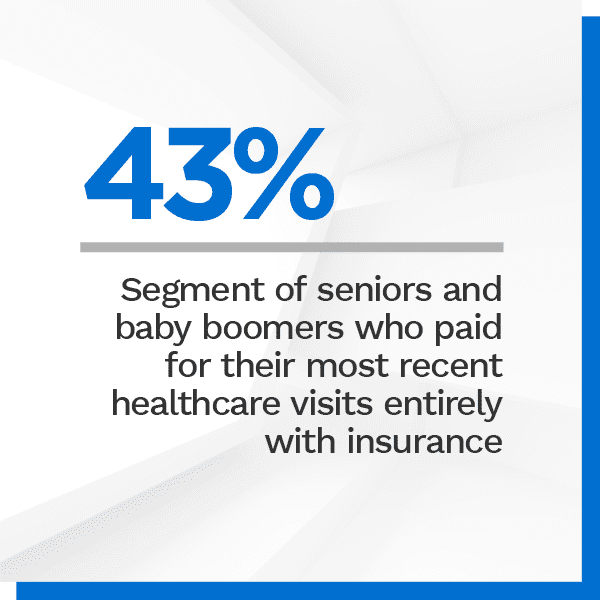Online Billing Brings Payments Relief To Senior Living Facilities, Residents

Every member of the baby boomer generation will be 65 or older by 2030, a startling fact that highlights the growing need for access to long-term care.
The cost of senior living is rising, and even government-funded programs such as Medicaid will not entirely cover the costs. Some seniors and families opt to pay for fees out-of-pocket, while others have invested in hybrid or traditional policies. Still, just 10% of older adults have a plan to pay for long-term care services.
A new poll from The American Association of Retired Persons (AARP) revealed most Americans prefer to grow old in their own homes with medical aid rather than at a hospital or senior living facility. Traditional long-term care insurance providers keep raising their premiums to a price tag unaffordable for many U.S. citizens, however, and to remain at home, aging adults commonly rely on their children or other family members to provide care. The Credit for Caring Act has suggested providing family caretakers with a $5,000 tax credit to ease the financial burden.
In the Long-Term Care And Payments Report, PYMNTS examines how older adults and their loved ones can plan for and afford the costs associated with long-term care if it becomes necessary.
Around the Long-Term Care and Payments Space
Nearly all financial advisers say families should discuss long-term care, and it is a necessary part of financial planning. On the other end of the spectrum, a shockingly low 10% of older adults have plans for future long-term care necessities. While 48% of financial advisers claim to have spoken with their clients about senior living costs, just 38% of clients say their financial advisers have reviewed any policies with them.
A new spending bill may provide financial relief for seniors and their families. Proposed legislation would increase funding for home healthcare services. The new multi-trillion dollar package includes $190 billion in aid for seniors and disabled individuals to remain at home and in community settings rather than go to hospitals and long-term care facilities. The proposed funding would also increase wages for home healthcare providers and support opportunities for additional employee training.
Aging U.S. citizens are not prepared to finance long-term care, says new research from CCR. Family members such as spouses and children make up 60% of all caregiving for adults 65 or older. Other options include hiring senior care providers using personal savings, long-term care insurance or Medicaid. Just 11% of older adults have a long-term care insurance policy, however, and Medicaid will only assist those who have already exhausted all personal expenses.
For more on these and other news items, visit the Report’s News & Trends.
Yardi on How Older Adults, Families Pay for Long-Term Senior Living
Online and alternative payment options are now preferred and expected by most consumers because of the many conveniences they provide. Senior care providers are now offering electronic payments to older adults and their families to help ease the financial burden associated with the steadily increasing costs of long-term care.
Online access to financial information gives patients a transparent look into the billing process and allows them to plan for any fees that may accrue, said Ray Elliott, vice president of senior living at property management software provider Yardi. To learn more about how electronic billing management can benefit seniors and their care providers, visit the report’s Feature story.
Deep Dive: How Education Around Long-Term Care Payments Can Help Aging Americans Prepare for Retirement
As one of the largest generations in history enters retirement, the topic of long-te rm care is front and center. The U.S. Department of Health and Human Services reports that nearly 70% of retirees will require some form of long-term care in their lifetime. Yet, just 33% of workers are comfortable with the amount of personal savings they have set aside for these expenses. Approximately one-fifth of Americans 65 or older will not require long-term care, yet 20% will need minimal assistance for the remainder of their lives, and 25% will require substantial support for up to three years.
rm care is front and center. The U.S. Department of Health and Human Services reports that nearly 70% of retirees will require some form of long-term care in their lifetime. Yet, just 33% of workers are comfortable with the amount of personal savings they have set aside for these expenses. Approximately one-fifth of Americans 65 or older will not require long-term care, yet 20% will need minimal assistance for the remainder of their lives, and 25% will require substantial support for up to three years.
To learn more about how aging adults can better plan for long-term care expenses, visit the Report’s Deep Dive.
About the Report
The Long-Term Care And Payments Report, done in collaboration with American Express, offers coverage of the most recent news and trends regarding advancements in electronic payments strategies for long-term care payments and alternative payment options for seniors and their families.


